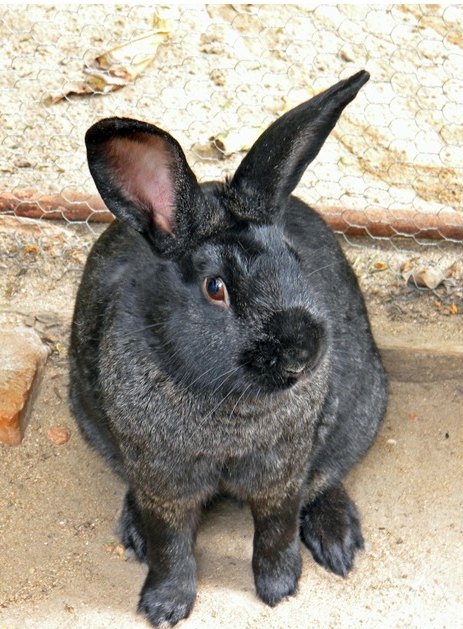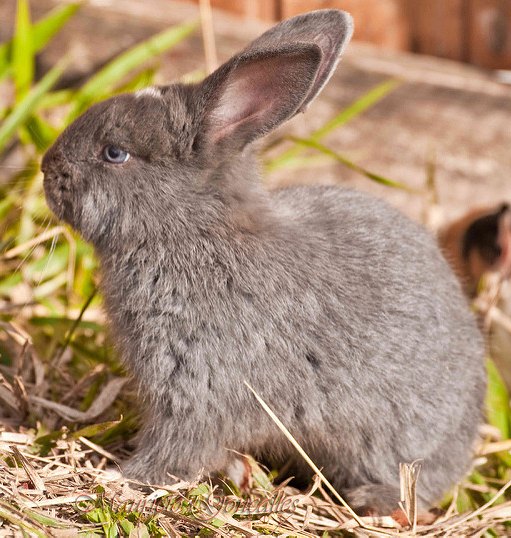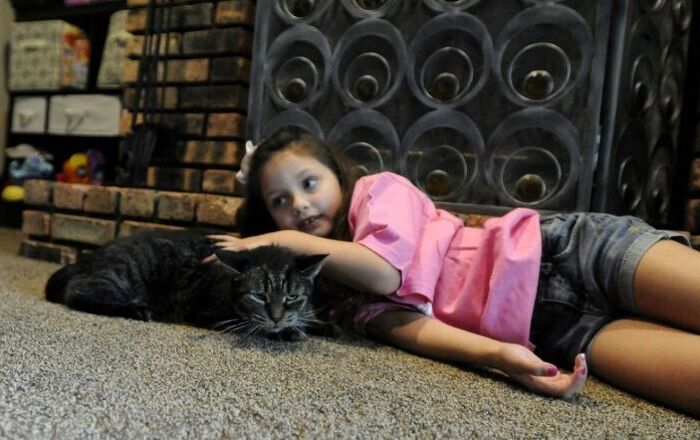
Brazilian Rabbit Breed History/Origin
The Brazilian Rabbit is a popular pet rabbit breed that is native to South America, and it is common in the countryside, as well as suburban districts and market areas, in Brazil. These are considered European domestic rabbits, and it is thought that they were introduced to Brazil by Portuguese sailors.
Although there are some breeders in the United Kingdom and in the United States, particularly in Arizona, where a small population of these rabbits has grown since they were introduced in the 1980s by a Peace Corp volunteer who was returning home, this breed is not recognized by the British Rabbit Council (BRC) or the American Rabbit Breeders Association (ARBA). As a result, this breed is common in Brazil, but rare in other parts of the world.
You’ll need to brush your Brazilian Rabbit at least once a week.
Overall Description

The shape of Brazilian Rabbit males is the commercial shape, making them stocky and round. Females, on the other hand, feature a mandolin shape, giving them a semi-arch profile.
The ears should be large, well furred, and thick, and they are carried upright, open, and forward.
Coat
A Brazilian Rabbit’s coat will be thick and dense. It will also feature long, coarse guard hairs and fluffy, thick underfur that either stays erect or rolls back slowly when ruffled.
You will need to brush your Brazilian Rabbit at least once a week in order to remove loose fur and excess fur. Doing so will prevent matting and keep the coat clean and healthy.
Colors
Even though the Brazilian Rabbit can feature a variety of colors, the main varieties include self, broken, and Californian. Their coats can be patterned or solid, and colors can include a variety of blue or dilute black shades, such as blue, blue chin, opal, blue frosted white, smoked blue pearl, blue steel, blue fawn, and tortoiseshell. This is because the Brazilian people prefer pastel, bright colors, and this rabbit breed has been fixed for dilution and black pigment. Aside from the Californian pattern, all of these rabbits will have eyes that are hazel to blue-grey in color.
The Brazilian Rabbit isn’t recognized by the BRC or the ARBA.
Care Requirements

Because Brazilian Rabbits, like other rabbit breeds, are herbivorous, you need to provide your pet with a varied diet that consists of hays, such as Timothy hay, and commercial rabbit pellets. Fresh foods, such as leafy greens and other vegetables, as well as some fruits, can also be included in your pet’s diet. This will ensure that your rabbit gets plenty of fiber and nutrients every day. Also provide your pet with fresh, clean water at all times.
You can choose to house your Brazilian Rabbit indoors or outside. Housing these rabbits inside your home will protect them from predators, extreme temperatures, and other dangers, but be sure to rabbit-proof your house for your pet’s safety and to keep your belongings from being chewed on.
When housing a rabbit indoors, you do need to let him out to exercise and roam, as well as get access to fresh air and sunshine. You can even provide your indoor rabbit with some safe access to the great outdoors with the help of an exercise pen, lawn enclosure, or extension hutch.
Health
It is important to know that Brazilian Rabbits could be susceptible to viral infections and colds, so keep your pet away from drafts and sudden temperature changes. You should also do your best to keep your pet’s stress level as low as possible to prevent him from becoming more susceptible to illness.
Like other rabbits, Brazilian Rabbits can also become infected with ear mites or develop conjunctivitis, hairball obstructions, bloat, and intestinal problems like coccidiosis.
Brazilian Rabbits do best when they are kept in pairs or trios.
Temperament/Behavior
The Brazilian Rabbit is a popular pet breed because these animals are gentle, friendly, social, and calm. They will get along well with other pets, such as guinea pigs, dogs, and cats, but they do best when they are kept in pairs or trios. Even as adults, they will rarely fight with one another, as they instead prefer snuggling with each other, with other pets, and with their human family.
As is the case with other rabbit breeds, you should expect that your Brazilian Rabbit will be most active at sunrise and sunset. These animals can also be stressed easily, and they can be timid and fragile, so they should not be handled by small children.
Photo credit: Mgoncalles/Flickr; Ilan Ejzykowicz; Eliana Lúcio/Flickr















